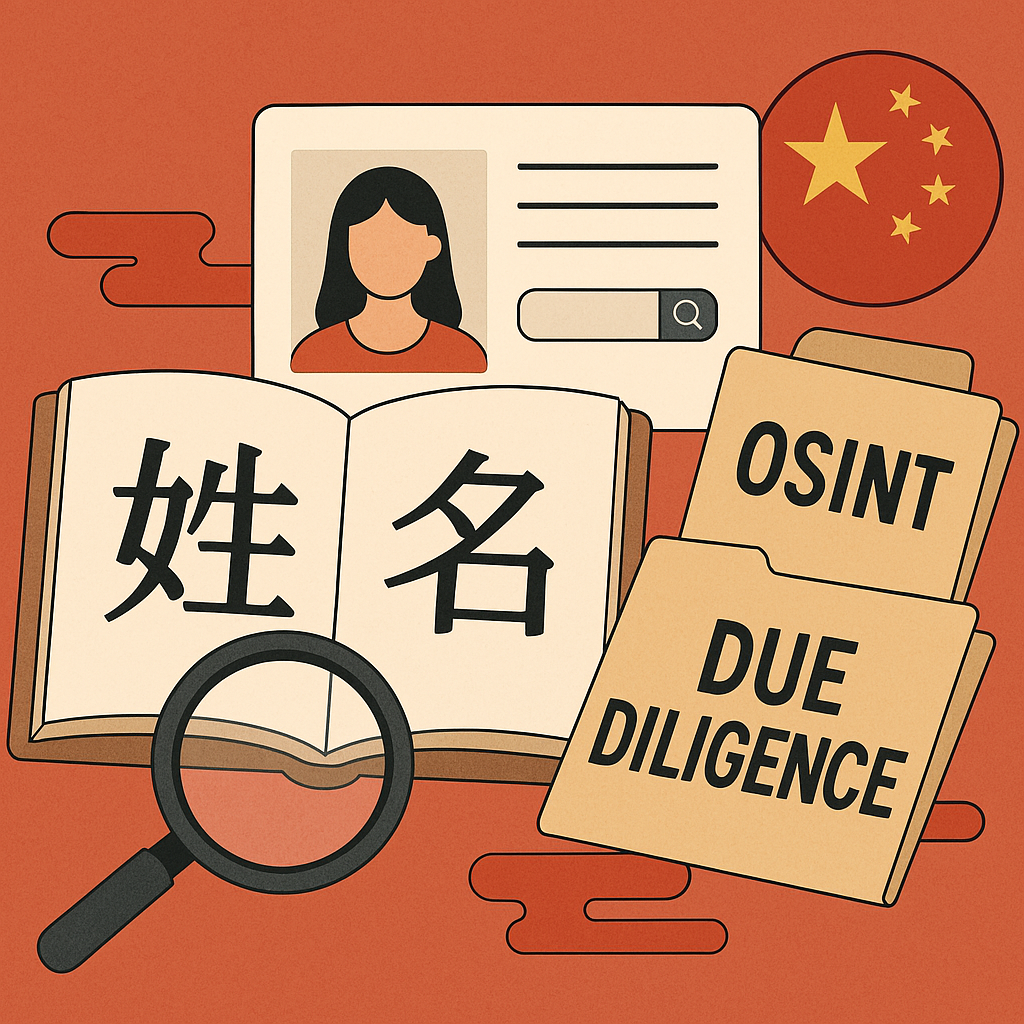📛 What Are Naming Conventions?
- Mistaken identity: Mismatching individuals with similar or reverse-ordered names
- Missed Real Content:Overlooking valid results due to inconsistent variation
- Data pollution: Duplicate records of similar incident fetched with different variations
- False Positive: Records matching with just with the target name are fetched
🧬 The Structure of Chinese Names

Family Name + Given Name
When the name is Romanized using a western alphabet, the generational and given names get combined, and they form what westerners interpret as a person’s given name. For example, 杨怀里 is Romanized as Yang Huaili, and in English, we would write Huaili Yang.
When investigating a Chinese target, it is advisable to combine and/or split the given name of the target. For example, if the target’s name is Peter Tai Man Chan, you can easily create variations of any Chinese name by following this simple formula:
| Formula | Example |
|---|---|
| First name + Last name | Tai Man CHAN |
| Last name + First name | CHAN Tai Man |
| First name (Combine / Split) + Last name | TaiMan CHAN |
| Last name + First name (Combine / Split) | CHAN TaiMan |
| Nickname / English (if found) + Last name | Peter CHAN |
| Last name + Nickname / English (if found) | CHAN Peter |
- Surname (JIA): This is the family name, and it’s usually one character long
- Given Name (ZhenNi): This is the individual’s personal name, and it can be one or two characters
- Generational Name (Zhen): A generational name is used to indicate the individual’s place within the family lineage. This name is shared by siblings within the same generation

♀️Importance of English Nicknames-
Many Chinese people, particularly those who interact with English speakers, adopt English nicknames for convenience and to facilitate communication. These nicknames are not translated from their Chinese names but are chosen separately.It’s important to note that these English nicknames are not part of the individual’s formal Chinese name and are used in specific contexts, such as interactions with non-Chinese speakers.
👩Married Woman
🔎About Pinyin
🏷️About Wade-Giles
📝Languages

🧭 Why This Matters for OSINT & Due Diligence
- Avoiding Misidentification:For example,李小龙, 李小龍, Li Xiaolong, Xiao Long Li — could be flagged as four separate people.
- Cross-Border Due Diligence:Romanization inconsistencies (like Pinyin vs. Wade-Giles) further muddy the waters.
- Language & Cultural Nuance:Double surnames and regional naming customs (like Cantonese or Hakka variants) add to the challenge.
Consequences
| Challenge | Impact | Tips |
|---|---|---|
| Name order reversal | Missed connections | Check if surname appears in first position |
| Inconsistent romanization | Duplicate or fragmented identities | Standardize based on Pinyin |
| Naming similarities | Mistaken identities | Cross-validate using additional sources |
| Nicknames or pseudonyms | Obscured real identity | Investigate known aliases and context |
Translation tools and tips for accuracy
| Tool | Highlights | Links |
|---|---|---|
| Google Translate | Supports Simplified & Traditional Chinese, voice input, handwriting, and document translation | Google Translate |
| DeepL | Known for high-quality, context-aware translations; supports document uploads | DeepL Translate |
| Yandex | Offers predictive typing, pronunciation, and dictionary features | Yandex Translate |
Conclusion:
In OSINT and due diligence, a name is a lead.Misreading that lead can mean missing red flags, misidentifying individuals, or drawing false connections. Chinese names, with their unique structure, different transliterations, and cultural layers, often trip up even experienced Investigators. The more accurately you interpret a name, the more information you will receive about an entity or a subject.
In high- stake investigations, details aren’t minor. Indeed, a difference between clarity and confusion.

